The Best State and National Park Paving Solution
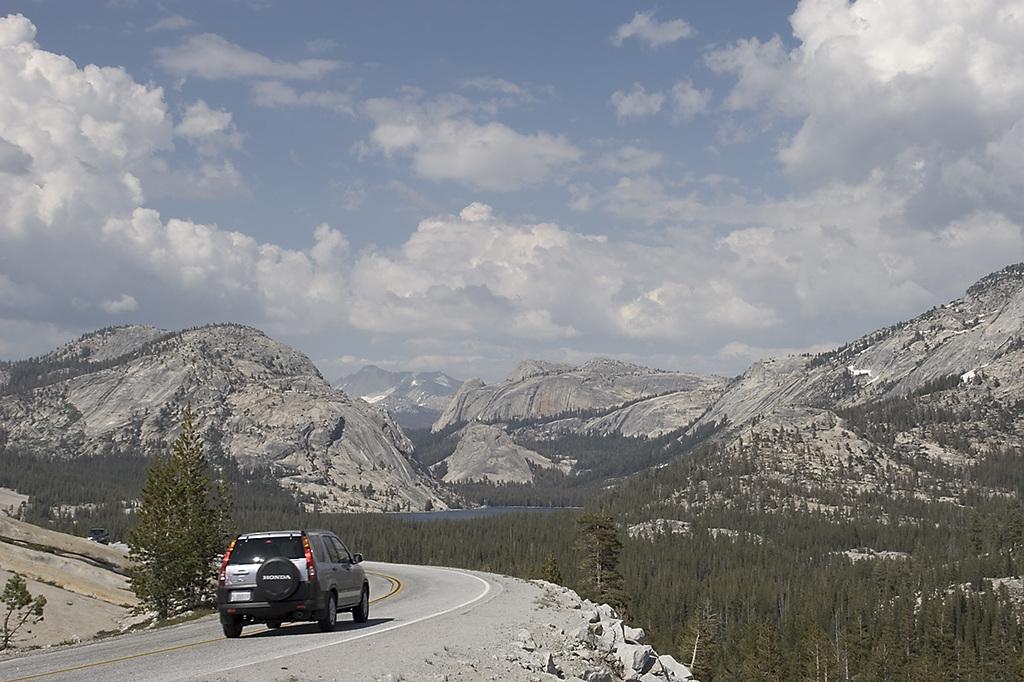
Our State and National Parks are some of the most beautiful and pristine areas of land in the world. From coast to coast, people enjoy going on hikes and generally admiring nature on land that’s been set aside for this specific reason. However, even State and National Parks require paving in certain areas, which can detract from the natural beauty and is expensive to maintain as well.
Parking lots, pathways, and other paved areas are necessary to help us enjoy these parks to the fullest extent. Many paved areas within our Parks are currently made from either asphalt or concrete. These materials are not only inefficient, but producing them is a burden on the already-strained environment, and they deteriorate rapidly, leading to costly maintenance and other issues.
Fortunately, there’s a better solution than asphalt or concrete when it comes to paving our Parks. This is critical if we want to preserve our sacred land and keep our Parks in harmony with the land, so let’s look at a superior paving alternative.
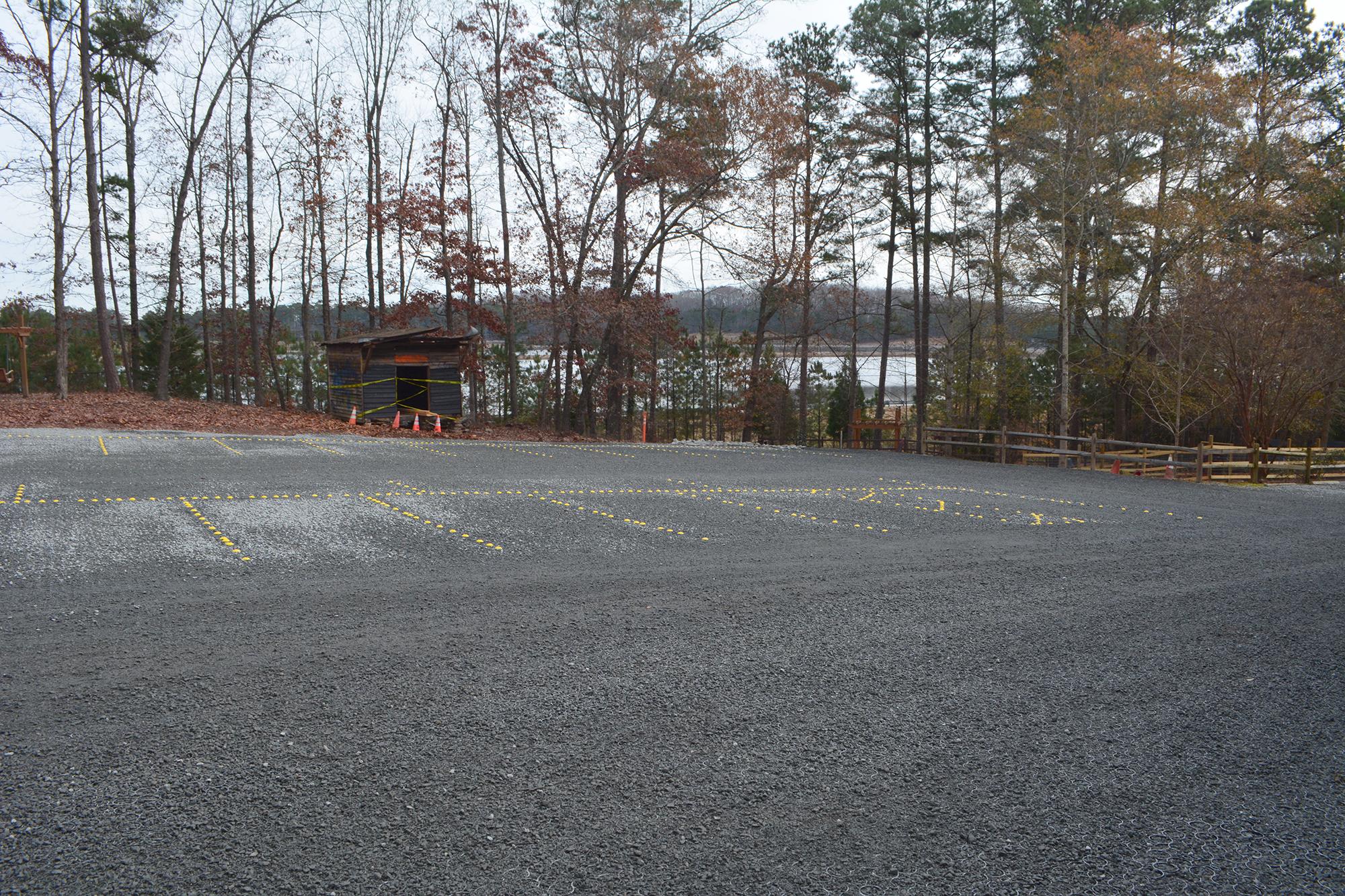
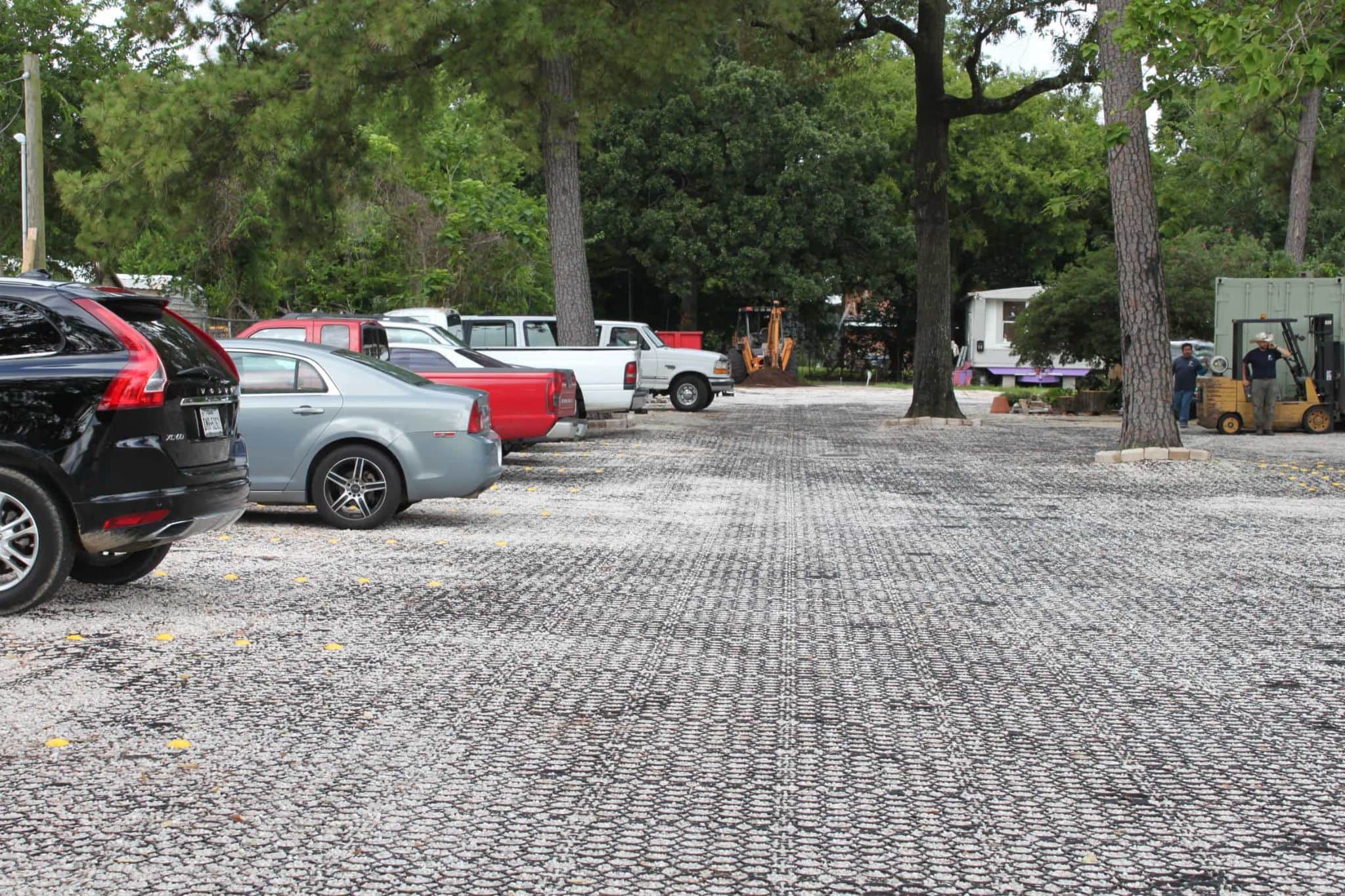
When it comes to what type of pavement we should be using in our State and National Parks, there’s no question about it. Permeable pavement is a solution that outperforms concrete and asphalt in every category and is far better for the environment. For example, TRUEGRID PRO PLUS is a paving solution that combines gravel with interlocking, plastic pavers to provide a level surface that’s both tough and 100%-permeable.
This combination of incredible strength and permeability means that there is almost no maintenance required throughout the 40-50 year lifespan of these pavers. Unlike asphalt and concrete, which require lengthy waiting periods and heavy machinery to install, permeable pavers have the simplest installation method of any paving material.
For gravel-filled pavers like TRUEGRID PRO PLUS and TRUEGRID PRO LITE, the area to be paved is excavated to a depth of 8 to 12 inches. Next, a piece of fabric is laid at the bottom of the pit and gravel is poured in. The gravel is then compacted, and the pavers are snapped into place over the top like LEGO® blocks.
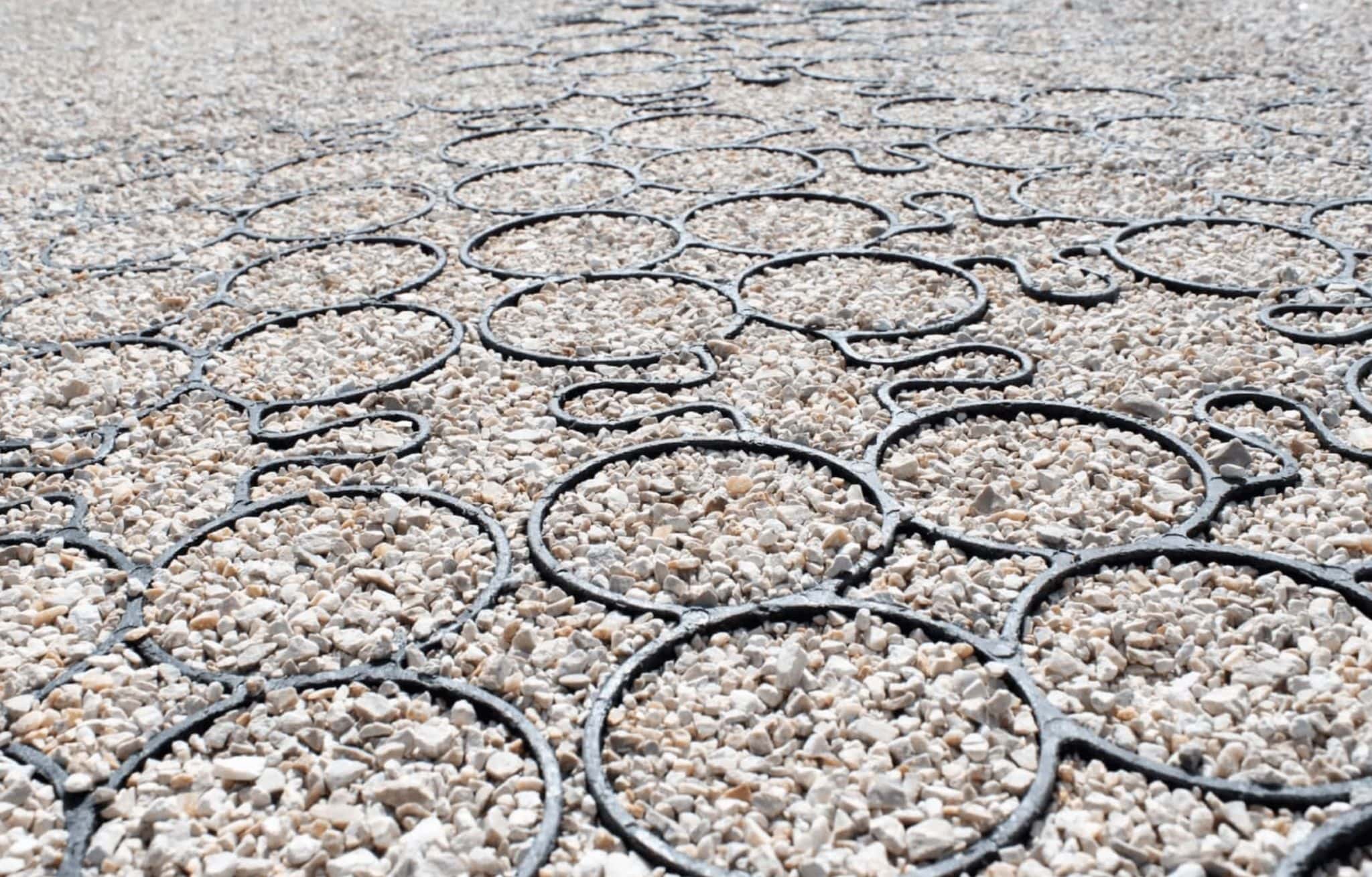
Once the pavers have been snapped into place, more gravel is poured over the top, filling the empty cells of the pavers and weighing them down on the patented X-anchors, a key feature of the TRUEGRID system. This gravel is compacted into the pavers by a heavy roller or vehicle, easily completing the installation process in as little as a day, depending on the size of the project.
The result is a tough, durable natural looking surface that compliments the park instead of violating it.
TRUEGRID Permeable Pavers Are More Eco-Friendly than Other Types of Pavement
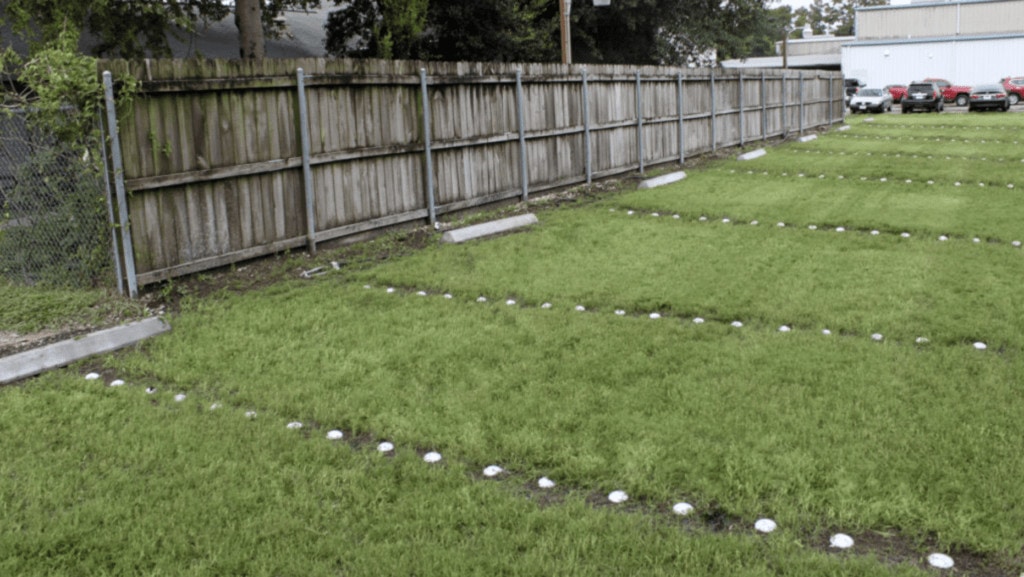
Unlike asphalt or concrete which release excessive amounts of carbon into the air when they’re produced, TRUEGRID pavers are made from 100%-recycled plastic. Despite being made from plastic, they are far more durable than asphalt or concrete, which break easily and fall into disrepair over time. Permeable pavers are perfect for use in our State and National Parks because they’re UV-resistant, and unaffected by extreme temperatures and weather.
They also prevent the typical erosion found around impermeable pavement by allowing water to drain directly through. This lessens the need for maintenance and helps keep trails and pathways safer by preventing them from washing out. TRUEGRID PRO PLUS isn’t the only permeable pavement solution offered by TRUEGRID, either.
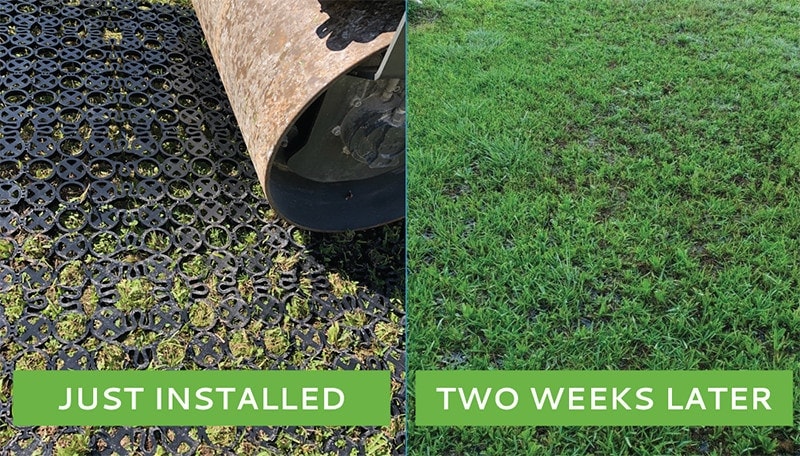
For a more natural-looking, yet just as durable and reliable type of pavement, there is the TRUEGRID ROOT™ paver system. They are designed to press right into the soil over the top of grass and can transform any grass area into a place suitable for parking and driving. The pavers stabilize the grass and prevent it from rutting or being torn up, and the grass is able to grow right up through the pavers, so they’re almost invisible to the naked eye, depending on the blade length of the grass.
This solution is perfect for parks that want to avoid the look of pavement as much as possible, while still retaining the stabilizing benefits of pavement. You can even designate parking spaces with TRUEGRID SuperSpot markers that snap right into place in the top of the pavers. It’s also great for stabilizing trails and pathways while leaving the natural ground as undisturbed as possible.
It’s Time for a Better Solution to Pavement in Our State and National Parks
State and National Parks are meant to be places of preserved natural splendor. This means we need to keep them as pure and healthy as possible. Adding asphalt and/or concrete pavement to our Parks drives up the annual cost of maintenance, contributes to pollution, and disturbs the natural environment in ways that we don’t want.
If you’re in a position to oversee the installation of pavement in our State and National Parks or you simply want to enjoy the benefits of TRUEGRID permeable pavers on your own land, contact a pavement professional at TRUEGRID today for a quote.
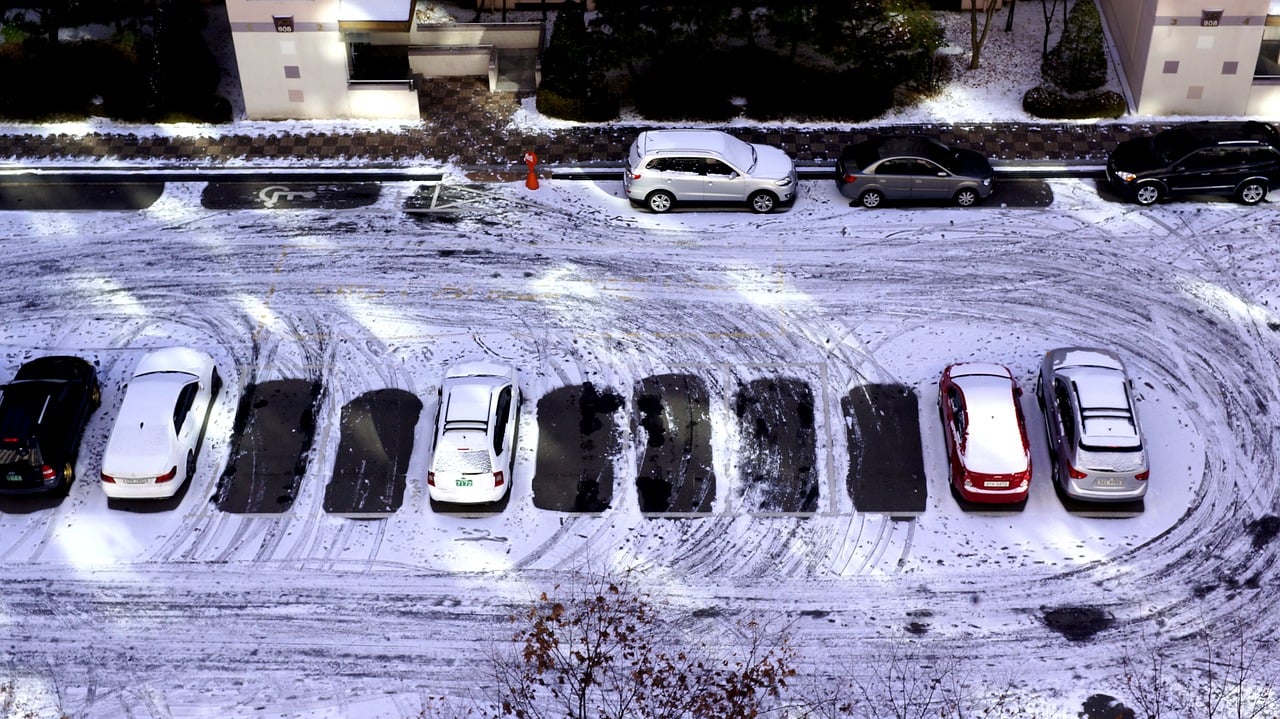
When it comes to pavement maintenance and performance, climate is a huge factor. Extremely high temperatures and rainstorms can have an adverse effect on pavement, so can cold temperatures, snow, and ice.
Cold has such an impact on certain types of pavement that it can speed up the timeline for maintenance and cost you tens of thousands of dollars extra to keep your pavement in top shape. Thankfully, new innovations in paver materials have produced cold-resistant pavers that are nearly impervious to the harmful effects of cold climates.
These pavers will last longer than traditional pavers in cold climates, and they perform well in every other measurable category as well. Cold weather paver installation is an important consideration if you want to minimize your maintenance costs and get the highest return on your investment.
In case you own a business in a cold climate, let’s take a look at why traditional paver materials are inferior for this type of climate and the best option for cold weather pavement.
Asphalt and Concrete Don’t Cut it In Cold Weather
One of the biggest causes of deterioration in pavement is what’s known as the freeze-thaw cycle. In cold climates, when small cracks develop in asphalt or concrete, water seeps into them and freezes. This spreads the cracks, leaving more room for water to get in after it thaws out.
The next time around, the cracks get bigger, and this continues until you have giant crevices in your pavement. This can be a daily occurrence during certain portions of the year, leading to an unusually fast deterioration of your sidewalks, parking lots, and other paved areas.
Another common problem with pavers in cold climates is ice. Water gets trapped on the surface of asphalt and concrete, freezing when temps get low enough. Even with a sloped pavement and/or drainage system in place, there’s usually still enough left-over water to freeze and create a slippage hazard for vehicles and people.
Icy pavement is the cause of thousands of injuries and auto accidents per year, and this issue should not be taken lightly. You can spread salt all over your pavement to melt ice every time it forms, but this is messy and inefficient. Concrete is also especially vulnerable to cold temps, since it’s made from cement mixtures that turn brittle and easily crack and break in cold weather.
Only TRUEGRID Makes the Best Solution to Cold Weather Pavement Problems
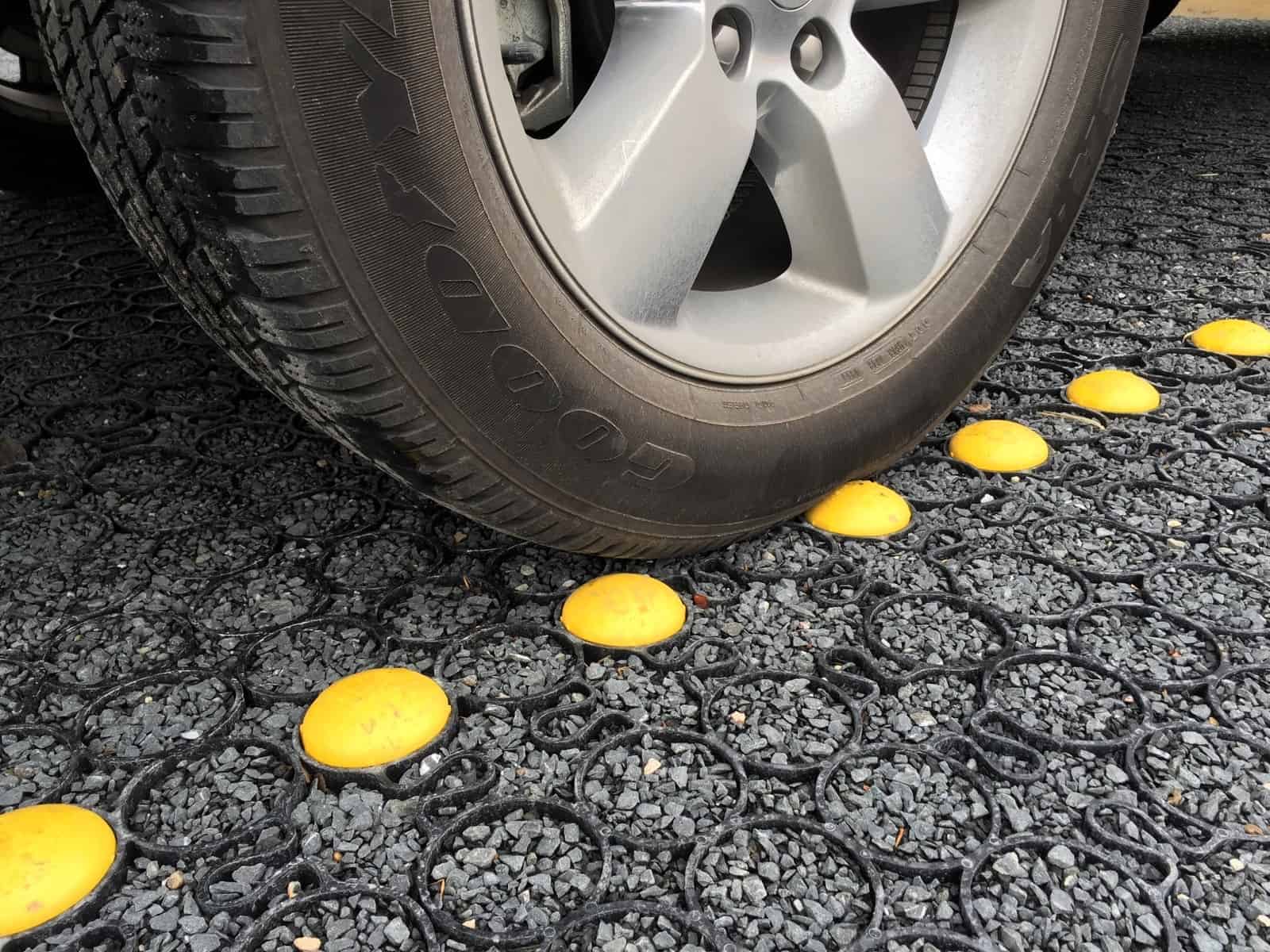
Permeable plastic pavers from TRUEGRID are the simplest, most effective way to eliminate the common issues faced with cold weather paver installation.
TRUEGRID PRO PLUS pavers are 98% permeable and made from 100%-recycled plastic. This makes them impervious to freeze-thaw cycles and prevents ice from ever forming on the surface, because water simply drains right through them and into the soil below.
TRUEGRID pavers are durable enough to handle commercial traffic and heavy loads in weather as cold as -58 °F without breaking. The added traction that the gravel-filled cells on the surface creates is especially helpful in cold weather as well, providing a better grip during snow and rain. Permeable pavers also require almost zero maintenance throughout their 40-50 year lifespan, which contributes to the overall higher level of cost-effectiveness.
The installation process is incredibly simple. The pavers are simply snapped into place over a gravel-filled pit. This creates a level, permeable surface with a ton of grip for vehicles. Most medium-sized installation jobs can be completed in a day or less.
Another benefit of using TRUEGRID PRO PLUS in a cold weather paver installation is the fact that they don’t use painted lines to mark parking spaces. Instead, TRUEGRID SnowSpot markers snap right into the pavers. There are a few variations of these markers, including a highly visible type that can be easily seen, even in the middle of a snowstorm. TRUEGRID lots are easily snow-plowable.
TRUEGRID Snow Plowing Video Link: https://www.truegridpaver.com/truegrid-videos/#SuCDnPUBw6U
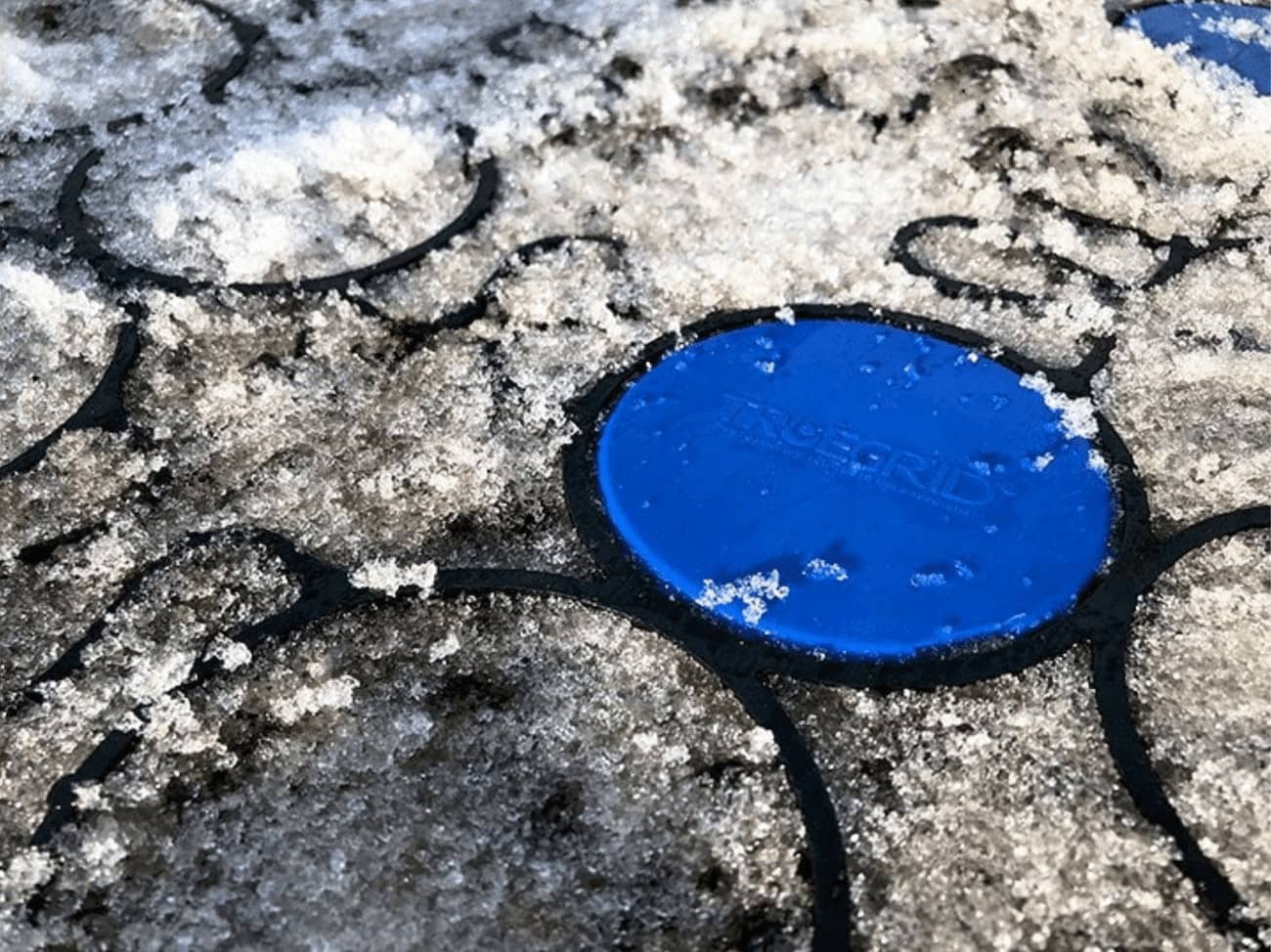
This eliminates the need for recurring maintenance in the form of repainting lot lines, and it also provides a much safer alternative and helps orient drivers even during the harshest winter weather.
Cold Weather Requires a Tougher Type of Pavement
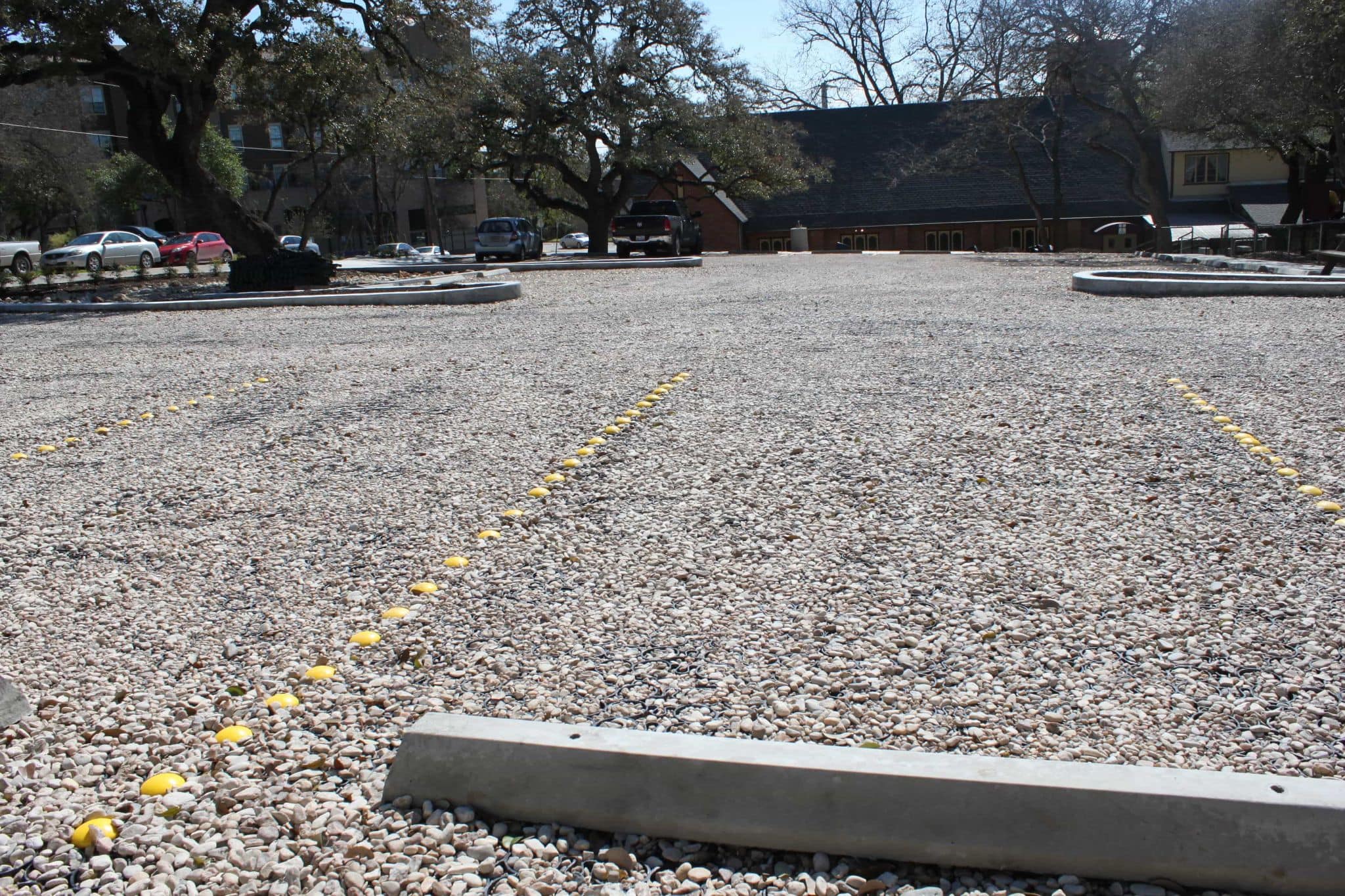
If you want your pavement to stand the test of time. even in brutally cold temps year-round, TRUEGRID PRO PLUS should be your first choice. Pavers in cold climates need to be specially suited for the challenges of snow, ice, and low temps, and TRUEGRID pavers are exactly that.
Asphalt and concrete require recurring maintenance even in perfect weather, and this is only exacerbated in cold climates. TRUEGRID, on the other hand, is durable enough to get the job done, and provides a safer, more reliable paving alternative even in the coldest temps.
If you want a lightning-quick cold weather paver installation that will save you money and keep your customers and visitors much safer, it’s safe to say TRUEGRID PRO PLUS is the way to go. If you’re interested in reaping the benefits of these cost-effective, durable, stylish permeable pavers, don’t hesitate to get in touch with a pavement specialist at TRUEGRID today.
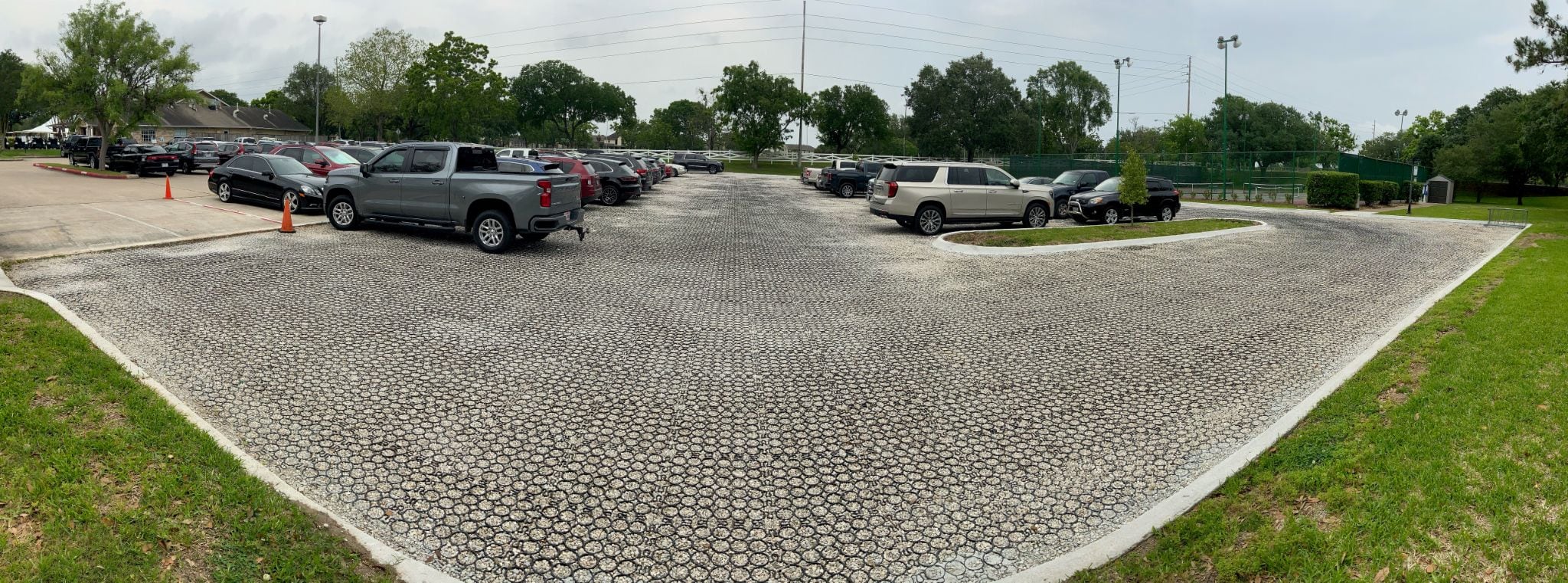
Commercial paving has been dominated by materials like concrete and asphalt for as long as they’ve been around. These materials are somewhat inexpensive, durable, and professional-looking enough to suit many business owners’ needs.
However, while these materials are suitable as pavement options, they’re far from the gold standard of pavement in 2021. New advancements have been made in commercial paving that completely surpass anything asphalt or concrete has to offer. Unfortunately, many businesses are still stuck in the dark ages when it comes to their commercial pavement.
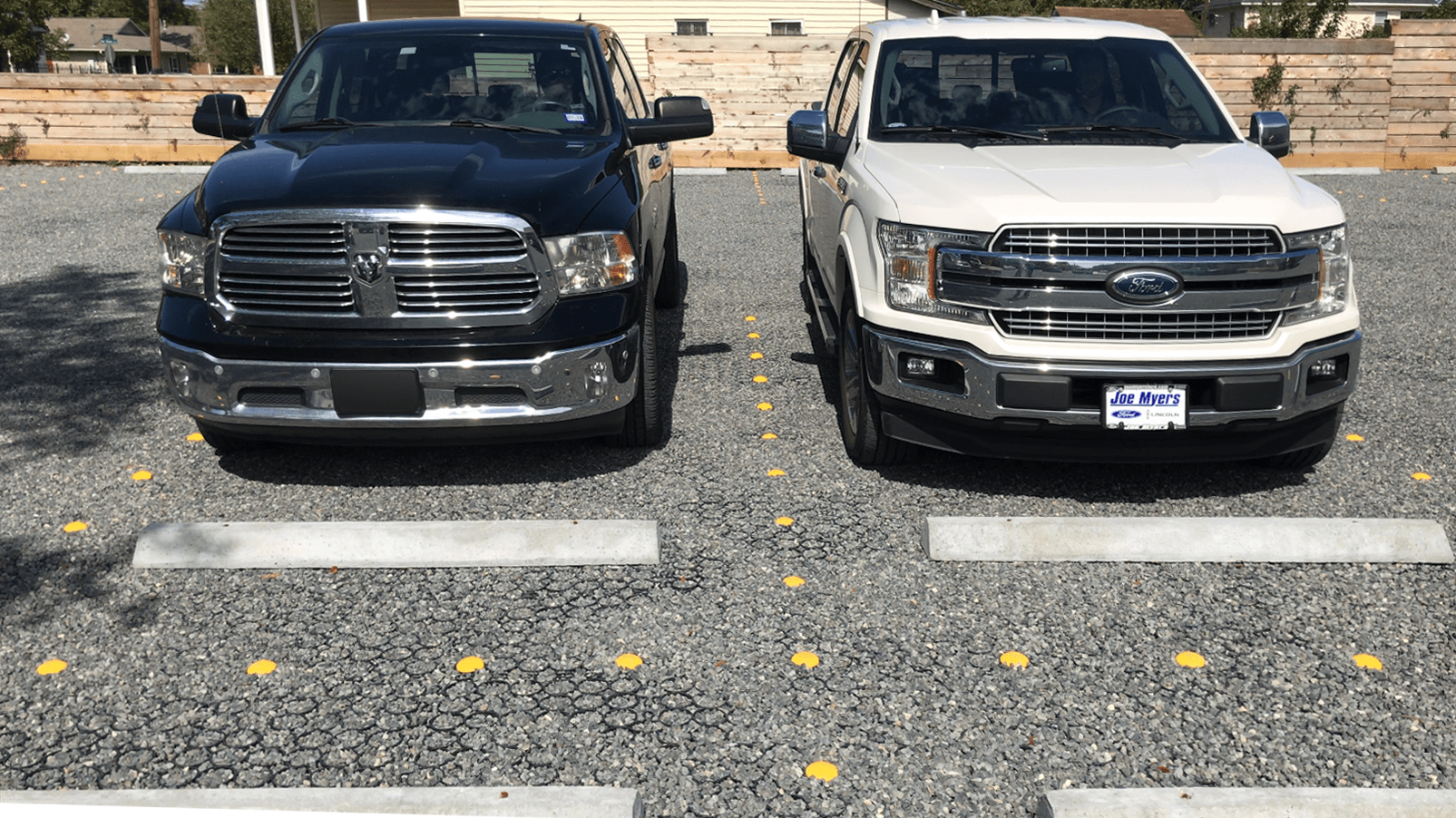
In case you were unaware of the superior alternative to either concrete or asphalt, let’s take a look at how traditional pavement materials stack up against more new-age paving materials like permeable commercial pavers.
The Problem with Traditional Pavement
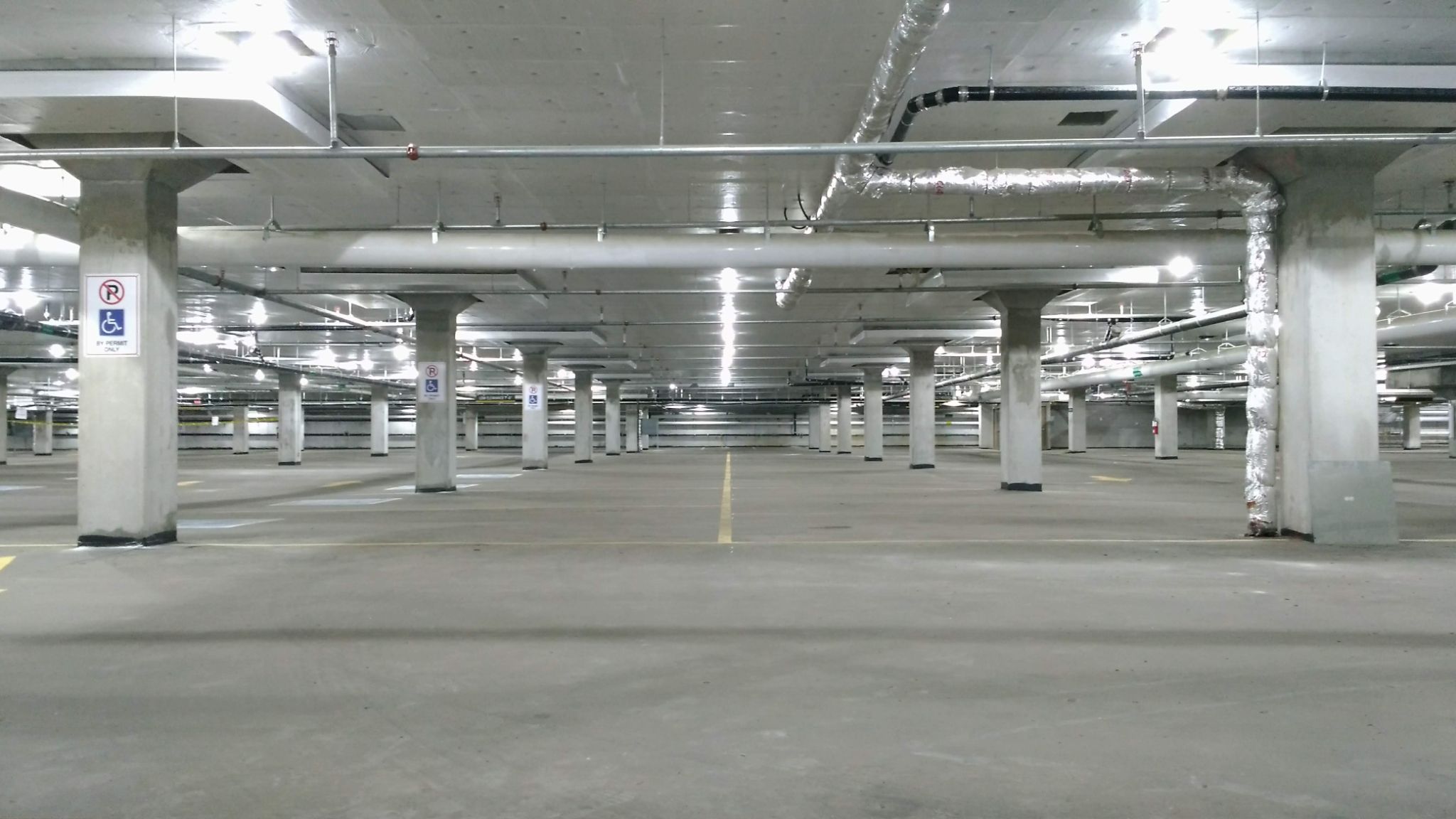
The reason most business owners still gravitate towards asphalt and concrete is that they simply don’t know any better. These materials have been used to pave walkways, parking lots, and other commercial areas for decades. They also perform at an average level when it comes to durability and functionality. There are, however, many problems with asphalt and concrete.
For starters, these materials require constant maintenance. They do not stand up well in extreme temperatures, with asphalt melting in high temps and concrete cracking in low temps. Asphalt and concrete both need to be resealed every 3 to 5 years, and resurfaced every 10 to 15 years.
Neither resealing nor surfacing are inexpensive procedures, and these costs can add up drastically over the lifetime of the pavement. Not only that, asphalt and concrete parking lots also need to be repainted when the lot lines inevitably wear out. In addition to the extensive maintenance costs of asphalt and concrete pavement, they also require additional drainage systems, in most cases.
You can get away with having a concrete pathway without any drainage, however, parking lots, curbs, and other large areas of concrete usually require drainage grates, and/or sloping so that stormwater will naturally filter into the road or another area where it can be drained. Some businesses even have detention ponds located on their property where stormwater is held until it can be slowly released back into the local sewer system.
This is expensive to install and cuts into the amount of land you can use for other purposes like additional parking spots. Neither asphalt nor concrete are considered eco-friendly either, with both releasing a lot of carbon into the air as they are produced.
Permeable Pavers Are the Future of Commercial Paving\
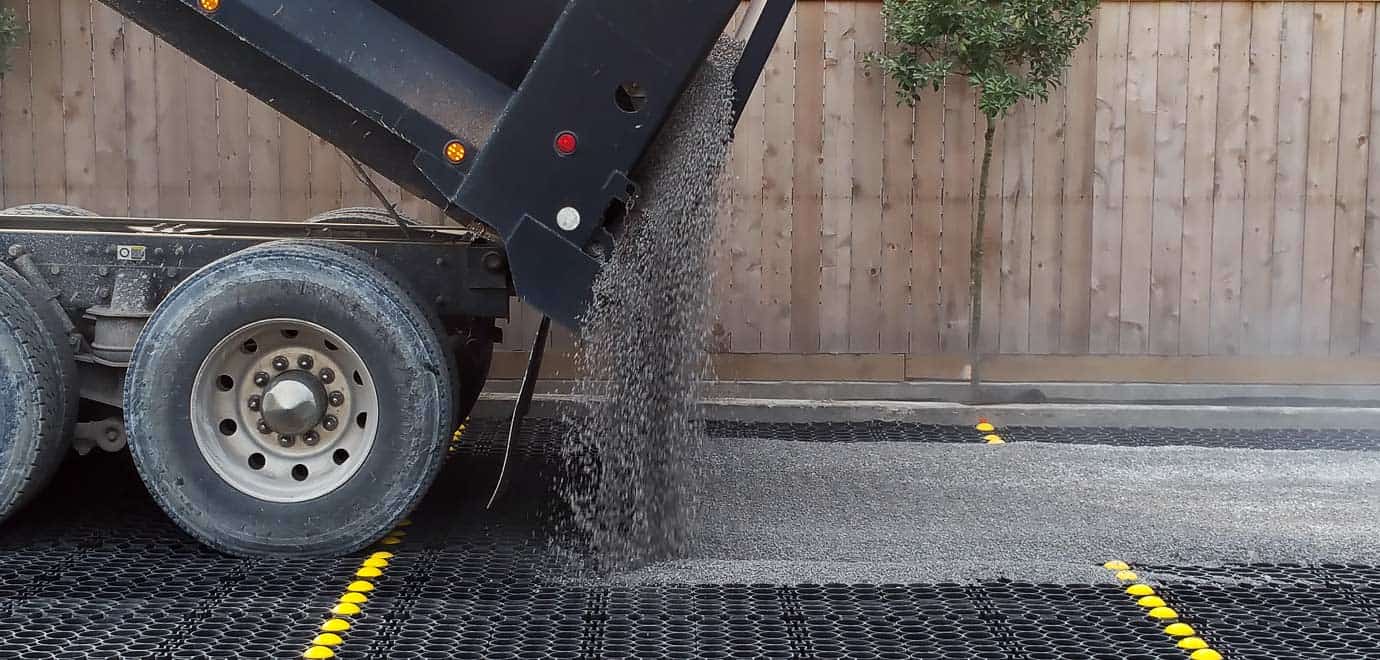
As environmental awareness and eco-friendliness become higher priorities for many businesses, the type of pavement we use will become one of the main focus points for builders and architects. Permeable plastic pavers are one of, if not the most eco-friendly paving material on the market.
The commercial pavers produced by TRUEGRID, for example, are made from 100% plastic. They take far fewer resources and time to install, leading to an overall healthier process from production to installation. Eco-friendliness is far from the only valuable trait these pavers possess, though.

TRUEGRID products such as TRUEGRID PRO PLUS, TRUEGRID PRO LITE, and TRUEGRID ROOT permeable pavers are proven to be more durable than concrete and asphalt over the long-term. In terms of sheer strength, even when empty, they can handle the full weight of a monster truck jumping off a ramp and landing on them, without breaking.
TRUEGRID permeable pavers also require almost zero maintenance throughout their lifetime, and can last 40 to 50 years before needing to be replaced. The land utilization you gain with TRUEGRID pavers is also a huge plus for commercial business owners.
The pavers are almost 100% permeable, so they can drain stormwater through them at an incredible rate. This allows the water to filter through the gravel within the pavers and drain into the water table below naturally, without putting a burden on local sewer systems.

It also eliminates the need for an above-ground detention pond, as all water drainage needs are taken care of directly below the pavement itself. That means you get to use 100% of your land for whatever you want.
TRUEGRID permeable pavers use permanent plastic markers for parking lot lines and other designs, which means no repainting lot lines. The installation is also incredibly quick, with smaller projects able to be completed in less than a day. Even large lots can be completed in a handful of days, as opposed to the weeks it would take to complete a big concrete or asphalt lot.
Commercial Paving Has Taken a Big Leap Forward in 2021
When you stack up the negatives of asphalt and concrete against the positives of products like TRUEGRID permeable commercial pavers, it’s safe to say that permeable pavers are poised to take over the commercial pavement industry.
Clients are already raving about their permeable pavement, citing the stylistic beauty, cost-effectiveness, eco-friendliness, and low maintenance requirements, among other benefits. If you’re about to install pavement on your commercial property, you can’t go wrong with TRUEGRID commercial pavers. Contact TRUEGRID today for a quote and join the many businesses making the switch to permeable pavement.
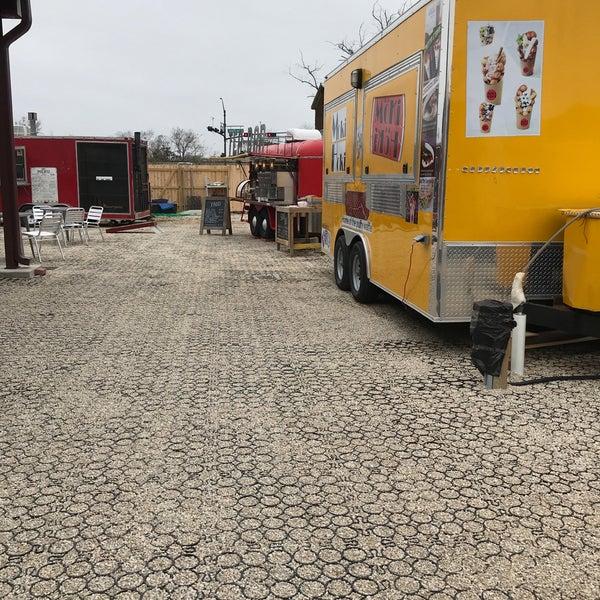
Summer is coming up, which means it’s food truck season. Food trucks can be an incredibly lucrative business and they’re poised to be especially profitable during the warm months of 2021, as COVID-19 restrictions loosen up and eager customers return.
Whether you own one or more food trucks yourself and you want to dedicate an entire parking lot to your business, or you’re simply renting out an existing lot to food truck owners, the quality of your lot can have a big impact on business.
Customers are much more likely to stop by a food truck parked on a clean-cut, flawless lot than they are a busted-up, disheveled lot filled with potholes and cracks. For those of you looking to update your lot to improve food truck business this year, it’s just not as simple as resurfacing your asphalt or concrete.
In fact, there are a variety of different materials and additional features you should consider if you want to maximize your profit. In case you’re looking to optimize your food truck parking, let’s go over 7 best practices that will set your lot apart from the rest:
1. Seating
It almost goes without saying, but you’d be surprised how many parking lots with food trucks in them don’t have any available seating for customers. Even if you own a different business and are simply renting out part of your lot to a food truck, having seating arrangements can go a long way to attracting food truck owners. Hauling in a few picnic tables should do the trick, but feel free to get more creative, as well.
2. Be Cool
Seating and shade go hand in hand. Nobody wants to sweat buckets in the hot sun while trying to enjoy their meal. If your seating doesn’t already come with patio umbrellas attached, try setting up a canvas or some pop-up canopies for people to sit under.
LAso, the surface temperature of your lot is important. Asphalt and concrete het super heated in the summer, absorbing the hot sun and raising teh temperature of the surrounding air. Use a gravel or grass filled permeable pavement like TRUEGRID and your lot temperature will drop dramatically. Be cool in the summertime.
3. Drainage
Not only will a proper drainage system prevent puddles from forming after a rain shower, it will keep stormwater from infiltrating and damaging your lot. Parking lot drainage can take the form of sloping the lot towards the road where water can drain into a sewer grate, or you could have drainage grates installed in the lot itself for a bit more effective solution.
Another excellent way to drain your lot is to build it with permeable pavers. This will allow water to drain directly through your parking lot and into the soil below, which is less costly than having additional drainage included in your food truck parking construction.
4. Build a Multi-Purpose Lot

A multi-purpose lot can be used for much more than just parking food trucks and customers. If you’re operating year-round, you want a lot that can handle all people and events.
Think farmer’s markets, Christmas tree lots, firework stands, outdoor movie screenings, and more. The best way to do this is by completing your food truck parking construction with materials that are unaffected by different types of weather and temperature fluctuations.
5. Permeable Gravel Pavers
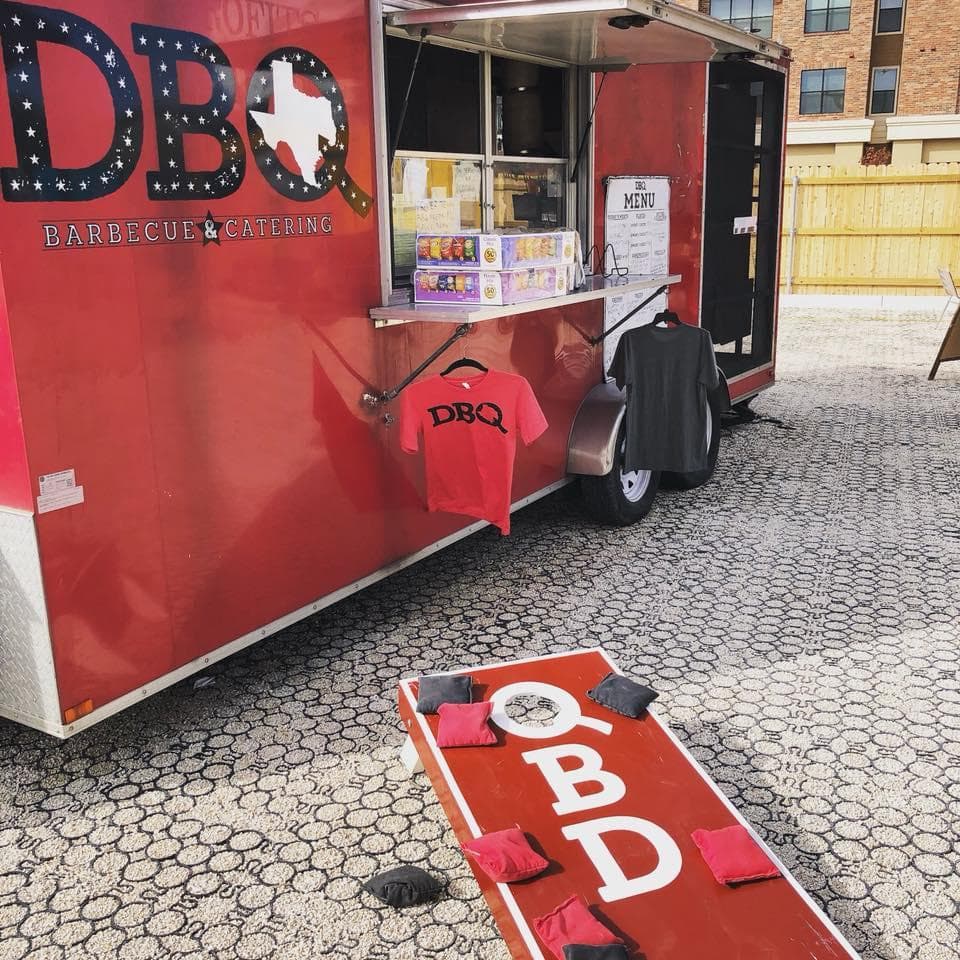
Asphalt and concrete are prone to water damage, rutting, cracks, unraveling, potholes, and other common types of damage. Permeable gravel pavers, on the other hand, will suffer none of these issues and are perfect for food truck parking. Products like TRUEGRID PRO PLUS pavers are snapped into place over a pit of gravel, with more gravel being laid over the top and pressed into the empty cells.
The additional gravel locks the pavers into place and provides a smooth, stylish, and level surface for customers to drive on. The pavers are also 98%-permeable and provide a built-in drainage system, making for a high-quality lot that will last around 40-50 years with minimal maintenance.
TRUEGRID PRO and TRUEGRID PRO LITE pavers do not absorb sunlight like asphalt does, preventing the dreaded “heat-island” effect that afflicts so many asphalt lots. They also utilize permanent plastic markers for lot lines, eliminating the need for repainting.
6. Permeable Grass Pavers

If you have a grass lot, stabilizing it with the TRUEGRID ROOT paver system is the perfect way to optimize it for food truck parking. These pavers are installed by simply driving over them to press them into the soil. After two weeks, the grass will grow right through them and you won’t be able to see them.
You’ll have a grass lot that can handle vehicle and foot traffic without taking any damage. This is ideal for food trucks and lets people feel a little more connected to nature as they eat and enjoy themselves.
7. A Big Sign
Having at least one big, flashing sign that can advertise the food trucks to passing traffic is essential to drawing in as many customers as possible. You could opt for a digital sign, but a manual sign will work as well. Your sign can be situated on the ground outside the food trucks or installed higher in the air on a pole.
Use These Tips to Get the Most Out of your Food Truck Lot
Food truck success depends a lot on food truck parking. Whether you own a truck yourself or you want to rent out your lot to other food trucks, make sure to implement as many of the tips in this article as you can to maximize your success.
If you want to use the best material for building a food truck parking lot, nix the asphalt and contact TRUEGRID today for a quote on durable, stylish, eco-friendly pavers that are sure to impress.

